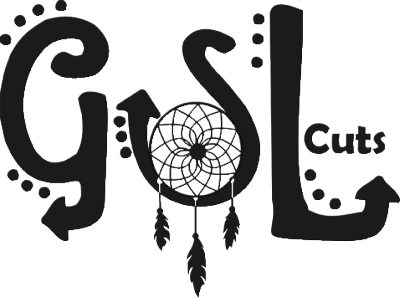Hello everyone, today I have something a little different for you - a technique tutorial which does not result in a finished project, at least not yet! This post is all about using your chipboards for stencilling and in particular, using them with gel plates to make lovely backgrounds. The two chipboards I am using are below.
I often use homemade stencils made from cardstock and they last a surprisingly long time. Here's an example of some of my homemade stencils which have been made using cardstock and cut using dies and have been in use for well over a year!

Using Chipboards as Stencils
So for this post, I thought I would show how you can also use your chipboards for stencilling and how to prepare them to last a bit longer and give them some protection. I am using these two chipboards which have been designed to use as stencils. Here they are out of the packaging and there are two in each package, so I put one of each away to use later.
Preparation
Before getting started, I gave them both a quick wipe with some paper towel to remove any soot leftover from the laser cutting.
The chipboards will work as stencils just as they are but to make them last a bit longer and stop them absorbing paint etc, I like to give them a good coat of matte medium on both sides.

Apply the matte medium on one side, then leave to dry (or if you are impatient like me, dry them with a hairdryer) before repeating the process on the other side.

For this tutorial, you will need a gel plate, any size will do. I will be using this rectangular one:

Example One - using acrylic paint
Using acrylic paint and a brayer, apply some paint to the gel plate, making sure to keep it light and even and smooth, then place the chipboard stencil on top.
Place a piece of paper over the top and use the brayer to burnish over the entire top of the gel plate. My brayer happens to have paint on it still since I don't really clean it but if you want, you can clean off your brayer on some scrap paper first. You can also just use your hands to do the same thing.

Carefully peel off the paper and your design will be printed on the right side of the paper.

Now carefully lift the stencil to reveal the pattern left behind on the plate.
At this point, a print is also possible just the paint left on the plate, which will result in the print on the right. There is still paint left on the plate which can be left on there for the next print.
Example Two - water soluble crayons
Next option is to use water soluble crayons to create a watercolour background. Dip the end of your crayon in some water and then use it to scribble over the surface of the gel plate. The water activates the crayon and will result in something similar to this:
Place some printer paper on top and burnish with the brayer or your hands, same as before and voilà, a nice watercolour background.

Next, apply a layer of acrylic paint on the plate, and then add the stencil on top and burnish that as well.

Next take your "watercolour" background and apply it on top of the stencil and burnish. Carefully peel off the paper to see what has been created!

Another masterpiece! Each print is one of a kind and you never know exactly what you will get which is part of the fun!

Bonus Example! Using the chipboard negatives for printing
Here is a lovely Leafy Swirl chipboard which I will use in a future project but in this example I am going to use the negative piece for a quick print. As this is a waste piece, I have not prepared it like the first two examples, so this is just the unaltered chipboard.
This time I am using two different colours of acrylic paint - magenta and gold.

Brayer the paint until it is blended smoothly and covers the whole gel plate.

Place the negative chipboard piece on top of the plate and burnish it firmly onto the plate. Carefully remove it to reveal this lovely pattern underneath.

Carefully cover the plate with another layer of paint - I used gold - then pull another print using some printer paper as before, burnishing on top.

When you pull the print, it will reveal the lovely design of the negative piece with the background colour (gold) behind it.

So now I have a lovely background printed and ready to use with the positive chipboard piece if desired.
Here are all the prints I made using these chipboard stencils. 
Warning - monoprinting can be addictive! 
For these examples I used regular printer paper, which I like to use for collage, but you can use many different types of paper including deli paper, Bristol paper, cardstock etc.
I hope you enjoyed this tutorial and that you will try this out for yourself.
Till next time
Ingredients:
gel plate, acrylic paint, neocolour II crayons, brayer, printer paperPE126ES Seaweed Circles *coming soon*
PE129ES Oceanic *coming soon*
Leafy Swirl C7G

























